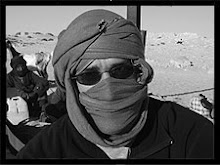National Geographic once called Corcovado National Park "the most biologically intense place on Earth". When assessing the competition, its marvelous array of flora and fauna managed to edge out the Galapagos, the Amazon basin and a particularly seedy Detroit health clinic. Corcovado is home to over 500 different species of trees, 140 species of mammals, 400 species of birds, 116 reptile and amphibian species, 40 species of fish, and, for a little while, at least one Wandering Jew. This high level of biological diversity can easily be attributed to the thirteen major ecosystems that exist within the park, including montane forest, cloud forest, jolillo forest, prairie forest, alluvial plains forest, swamp forest and Forest Whitaker. Not surprisingly, Corcovado is widely considered the crown jewel in Costa Rica's extensive national park system.
Though tourism has ramped up over the last few years, the remoteness of the park still keeps day-trekkers at bay. I had already survived a puddle-jumper flight and braved remote roads, but I still had not made it to the park entrance. The most dangerous challenge was yet to come. Walking down a hot and humid beach. Scary, I know. It gives me sunburn just thinking about it. No roads lead into this particular park and no buses crammed with sunburnt tourists ply its shores. In fact, Corcovado is only accessible by hiking a few kilometers down the shore at low tide. Misjudge the timing and you will end up swimming there. Since I was unfamiliar with the tide schedule, I thought it best to allow a guide to show me the way. This was bit of an ego deflator since I prefer to do these things by myself, but the lodge had someone available. Thankfully it ended up being a very small group, just me and two other people. Unfortunately they were honeymooners, so I landed the plum role of the third wheel.
Hiking through the park was beyond spectacular. I saw more wildlife in a single hike then I have seen in the previous five years of hiking combined. It was like hiking through a zoo, only the animals were not in cages and you had a much higher chance of getting mauled by a hungry cougar. There was still cotton candy though. It turned out that hiking with a guide was incredibly informative. For example, I learned that there is not one, not two, but three different species of monkey that will throw poo at you. The variety and abundance of wildlife was shocking. Every time I took a step, the ground literally jumped to life. Lizards dashed, frogs hopped, insects took flight. We spotted anteaters, coatis, hermit crabs, land crabs, tiny frogs, giant spiders, hawks, macaws, pelicans, toucans, howler monkeys, spider monkeys, capuchin monkeys, bats, iguanas, salamanders, skinks, and lots and lots of coconuts. My favorite was the Jesus Lizard, which can literally walk on water and presumably tastes better than a communion wafer.
There are several trails that wind their way through the park, mostly through dense jungle. We took a coastal track where several rivers needed to be forded. We eventually stopped at the Rio Sirena, the largest and most dangerous of the river crossings. At high tide it is not only full of crocodiles, but sharks and stingrays swim upstream through the estuary. The full hike, which I am sorry to say I did not do, takes four full days and covers about 60 kilometers. I would love to head back and give it a go, so if anyone would like to join me for that particular adventure, please let me know. Despite all the threats--sharks, crocks, poisonous snakes, jaguars, peccaries, ocelots, and poo-flinging monkeys--the most dangerous of all is an unexpectedly stealthy killer, the dastardly coconut. As it turns out, falling coconuts kill more people in the park every year than wildlife does. They drop silently from the trees, splitting heads and spilling innocent blood. Damn you coconuts, damn you.
Subscribe to:
Post Comments (Atom)








No comments:
Post a Comment